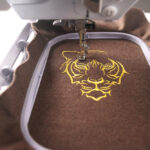I. Understanding Wicker Furniture: Types and Materials
II. Creative Upcycling Ideas for Wicker Furniture
III. Essential Tools and Techniques for Upcycling Wicker
Understanding Wicker Furniture: Types and Materials
Hey there! If you’ve ever strolled through a cozy garden or a chic patio, chances are you’ve come across some delightful wicker furniture. It’s not just pretty to look at; wicker furniture has a rich history and comes in various types and materials. So, let’s dive in and explore what makes wicker furniture so special!
What is Wicker Furniture?
First off, let’s clarify what we mean by “wicker.” Wicker isn’t a material itself; rather, it’s a method of weaving materials into a sturdy and often lightweight form. Typically, this weaving involves plant materials like rattan, reed, or willow, creating beautiful and functional pieces for your home or garden.
Types of Wicker Furniture
Wicker furniture isn’t just a one-size-fits-all situation. There’s a whole world of styles out there! Here are some popular types you might encounter:
- Chairs: Wicker chairs are a classic choice! They come in various styles, from lounge chairs perfect for sipping iced tea on a sunny day to more formal dining chairs.
- Tables: Whether it’s a small side table or a large dining table, wicker tables can add a touch of charm to your space.
- Benches: Perfect for gardens or entryways, wicker benches provide extra seating while enhancing the aesthetic appeal of your space.
- Storage Baskets: Not all wicker furniture is for sitting! Wicker baskets are stylish and practical for organizing your living space.
Materials Used in Wicker Furniture
Now that you know about the different types of wicker furniture, let’s chat about the materials that often make them up.
- Rattan: This is the most common material used in wicker furniture. It’s a climbing palm that grows in tropical regions. Rattan is strong, flexible, and can be woven into intricate designs, making it a popular choice.
- Willow: Another classic material, willow is softer and easily shaped, lending a rustic look to furniture. It’s great for lightweight pieces.
- Reed: This material is often used for smaller items, like decorative baskets. It’s flexible and has a natural look that works well in many settings.
- Synthetic Wicker: For those seeking durability, synthetic wicker, often made from resin, is a fantastic option. It mimics the look of natural materials but is resistant to weather and easier to maintain, making it ideal for outdoor use.
Why Choose Wicker Furniture?
But why should you consider wicker furniture for your home? Here are a few reasons:
- Style: Wicker furniture effortlessly blends into various decor styles, from boho-chic to coastal vibes.
- Durability: With the right care, wicker furniture can last for many years, especially if you opt for synthetic options designed for outdoor use.
- Comfort: Many wicker chairs and loungers come with cushions, making them cozy spots for relaxation.
In conclusion, wicker furniture offers a delightful combination of aesthetic appeal, versatility, and comfort. Whether you’re looking to furnish your patio or add a unique touch to your living room, understanding the types and materials of wicker furniture can help you make an informed choice. So, are you ready to bring some wicker charm into your space?
Creative Upcycling Ideas for Wicker Furniture
Wicker furniture is not just a timeless addition to your home; it’s a canvas full of potential waiting for your creative touch! If you have some old wicker pieces lying around, don’t toss them just yet. Upcycling is a fabulous way to give new life to these beautiful items while adding your personal flair. Let’s dive into some inspirational and fun ways to upcycle your wicker furniture!
1. Colorful Makeover
One of the simplest ways to transform your wicker pieces is through a splash of color. A fresh coat of paint can breathe new life into worn-out furniture:
- Pick Your Palette: Choose colors that complement your existing decor. Bold colors can create a focal point, while pastels can add softness.
- Spray vs. Brush: For a smooth finish, spray paint works wonders, while a paintbrush can give you more control, especially for intricate details.
Remember to use outdoor paint if your wicker will be placed outside to ensure it withstands the elements!
2. Cushion Magic
Adding or updating cushions can transform any wicker chair or bench from drab to fab:
- Fabric Choices: Look for outdoor fabric options if your furniture will be exposed to the weather—this ensures durability.
- DIY Cushions: If you’re feeling crafty, consider making your own cushions. It’s a fun project, and you can tailor the size and shape to fit your wicker perfectly!
An eye-catching fabric can also add comfort and style, making your wicker pieces inviting and cozy.
3. Wicker Wall Art
If you have a wicker chair or an old table that’s seen better days, why not repurpose it into a unique wall art piece? Here’s how:
- Remove the Legs: For chairs, simply detach the legs, leaving the backrest and seat to be mounted on the wall.
- Embellish: You can add hanging plants, fairy lights, or even framed photos to create a stunning visual display.
- Mount Securely: Make sure to use appropriate hardware to securely hang the piece on your wall, ensuring safety and stability.
This repurposing not only saves the furniture from the landfill but also creates a conversation starter in your space!
4. Wicker Planters
Why not turn your old wicker pieces into stunning planters? Here’s how to go about it:
- Choose the Right Piece: Look for sturdy items that can hold soil and plants, such as a large wicker basket or a chair without a seat.
- Line It Up: To prevent soil from falling through, line the bottom with a plastic liner or a trash bag, making holes for drainage.
- Add Your Plants: Fill with your favorite flowers or greenery, and watch your wicker planter turn into a lush centerpiece!
These planters can bring a touch of nature indoors and are a wonderful way to add character to your garden or balcony.
In conclusion, upcycling wicker furniture is a creative venture that not only helps the environment but also allows you to express your personal style. So, roll up your sleeves, unleash your imagination, and let those old wicker pieces shine in a whole new way!
Essential Tools and Techniques for Upcycling Wicker
So, you’re ready to dive into the wonderful world of upcycling wicker furniture? Fantastic choice! Wicker pieces, with their charming texture and versatility, can transform into stunning new creations with just a bit of creativity and the right tools. Let’s gear up for your next DIY project!
Key Tools You’ll Need
Before getting your hands dirty, it’s important to have the right tools at your disposal. Here’s a handy list of essentials:
- Sandpaper: A variety of grits (rough to fine) will help smooth out any rough areas and prepare the wicker for painting or staining.
- Paint or Stain: Choose a high-quality, weather-resistant paint or stain to revitalize your wicker. Look for options specifically designed for outdoor use if your furniture will be outside.
- Brushes and Rollers: A good set of brushes (both wide and narrow) will ensure even coverage for your paint or stain. Rollers can speed up the process on larger areas.
- Spray Paint: For a quick and modern finish, spray paint can work wonders on wicker. Just be sure to use it in a well-ventilated space!
- Wood Glue or Wicker Glue: Useful for fixing any loose strands or repairing your piece before starting the upcycle process.
- Clear Sealant: Protect your finished piece with a clear sealant to help it withstand the elements and everyday wear.
Techniques to Get You Started
Now that you have your tools, let’s explore some techniques that will set you on the right path to upcycling wicker furniture:
- Cleaning and Prep: Always start with a thorough cleaning. Use a soft brush or vacuum to remove dust and debris. Wipe it down with a damp cloth and let it dry completely. This step is crucial for ensuring paint adheres properly.
- Repairing Damage: Inspect your furniture for any broken strands or loose rattan. Use wood or wicker glue to secure any loose pieces, and allow it to dry thoroughly before proceeding.
- Sanding: Lightly sand the entire surface to remove old finishes and create a texture for the new paint or stain to grip. Remember to wear a mask to avoid inhaling any dust.
- Painting or Staining: Choose your color wisely! Lighter shades can create a fresh, airy feel, while darker tones add elegance. Apply your choice of paint or stain in thin, even coats. Patience is key here—allow each coat to dry before applying another!
- Sealing the Finish: Once your paint or stain is completely dry, apply a clear sealant to protect your work. This will enhance the durability of your piece, especially if it’s outdoors.
Final Touches
After all that hard work, don’t forget to dress up your newly upcycled wicker! Add some vibrant cushions or a cozy throw blanket to bring your vision to life. Personal touches can truly make your furniture feel like home.
And there you have it! With these tools and techniques, you’re well on your way to creating a stunning piece of upcycled wicker furniture. Happy crafting!





Comments